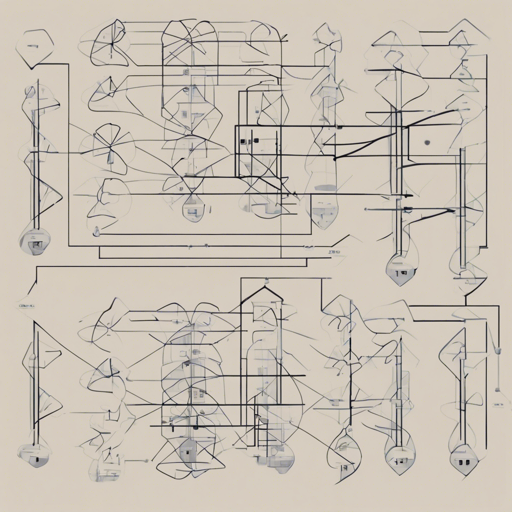BERT-base, a remarkable transformer model, has gained massive popularity for its outstanding performance on various natural language processing tasks. In this article, we will guide you through the process of reproducing and evaluating a pruned version of BERT-base, specifically tuned for the SQuAD v1.1 dataset using a hybrid movement pruning algorithm.
Understanding the Pruning Process
The pruned model you’ve encountered is achieved through a movement pruning algorithm that optimizes both self-attention and feed-forward network (FFN) layers. Think of it as cleaning out a cluttered room. You don’t just toss everything out; you assess what’s essential for your room’s functionality while keeping the useful items intact. In this case, the critical “items” (model parameters) that remain enhance the model’s performance without the excess weight.
Pruning Details
- Self-attention layers are pruned using a 32×32 block size.
- Feed-forward layers are pruned at a per-dimension grain size.
As a result, the model achieves an evaluation exact match of 78.5241 and an F1 score of 86.4138 based on 10,784 samples.
Reproducing the Model
To replicate this pruned BERT-base model, follow these simple steps detailed in the instructions:
- Access the block pruning paper for foundational knowledge.
- To gain the necessary codebase, you can refer to the documentation here until step 2.
Evaluating the Model
The pruned model can be evaluated directly using the Hugging Face QA example. It is essential to note that only the pruned self-attention heads are discarded, while the pruned dimensions in the FFN layers are sparsified instead of removed.
To evaluate, run the following bash commands in your shell:
export CUDA_VISIBLE_DEVICES=0
OUTDIR=eval-bert-base-squadv1-block-pruning-hybrid
WORKDIR=transformers/examples/pytorch/question-answering
cd $WORKDIR
mkdir $OUTDIR
nohup python run_qa.py \
--model_name_or_path vuiseng9/bert-base-squadv1-block-pruning-hybrid \
--dataset_name squad \
--do_eval \
--per_device_eval_batch_size 16 \
--max_seq_length 384 \
--doc_stride 128 \
--overwrite_output_dir \
--output_dir $OUTDIR 21 tee $OUTDIR/run.log
Optimizing for Inference Acceleration
If your goal is to observe inference acceleration, you’ll need to crop or discard the pruned structures. Use the following commands to set up your environment:
# OpenVINONNCF
git clone https://github.com/vuiseng9/nncf
cd nncf
git checkout tld-poc
git reset --hard 1dec7afe7a4b567c059fcf287ea2c234980fded2
python setup.py develop
pip install -r examples/torch/requirements.txt
# Huggingface nn_pruning
git clone https://github.com/vuiseng9/nn_pruning
cd nn_pruning
git checkout reproduce-evaluation
git reset --hard 2d4e196d694c465e43e5fbce6c3836d0a60e1446
pip install -e .[dev]
# Huggingface Transformers
git clone https://github.com/vuiseng9/transformers
cd transformers
git checkout tld-poc
git reset --hard 10a1e29d84484e48fd106f58957d9ffc89dc43c5
pip install -e .head -n 1 examples/pytorch/question-answering/requirements.txt
Launching Evaluation for Optimized Model
Finally, initiate the evaluation for your optimized pruned model using the following command:
export CUDA_VISIBLE_DEVICES=0
OUTDIR=eval-bert-base-squadv1-block-pruning-hybrid-cropped
WORKDIR=transformers/examples/pytorch/question-answering
cd $WORKDIR
mkdir $OUTDIR
nohup python run_qa.py \
--model_name_or_path vuiseng9/bert-base-squadv1-block-pruning-hybrid \
--dataset_name squad \
--optimize_model_before_eval \
--do_eval \
--per_device_eval_batch_size 128 \
--max_seq_length 384 \
--doc_stride 128 \
--overwrite_output_dir \
--output_dir $OUTDIR 21 tee $OUTDIR/run.log
Troubleshooting Tips
If you run into issues during reproduction or evaluation, consider the following troubleshooting ideas:
- Ensure all dependencies are installed correctly.
- Double-check your command syntax, especially paths and parameters.
- Look for any updates to the frameworks (Hugging Face, PyTorch) that may affect compatibility.
- If problems persist, consult the issues section of the relevant repositories.
For more insights, updates, or to collaborate on AI development projects, stay connected with fxis.ai.
Conclusion
In this article, we’ve journeyed through the intricacies of reproducing and evaluating a pruned BERT-base model tuned for the SQuAD v1.1 dataset. This knowledge not only enhances your understanding of model optimization but also equips you with practical skills for real-world applications in natural language processing.
At fxis.ai, we believe that such advancements are crucial for the future of AI, as they enable more comprehensive and effective solutions. Our team is continually exploring new methodologies to push the envelope in artificial intelligence, ensuring that our clients benefit from the latest technological innovations.

